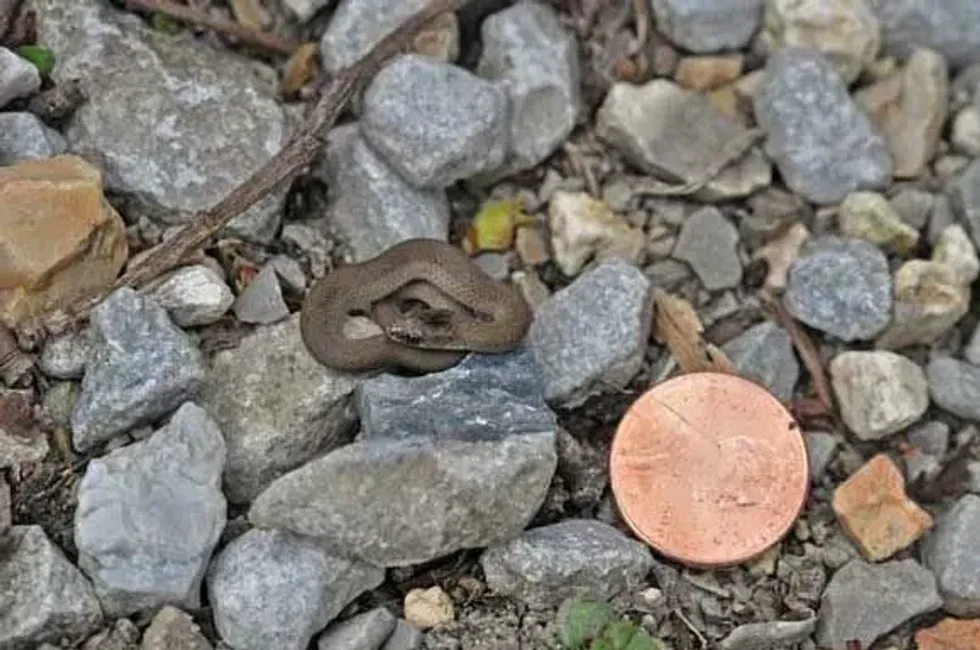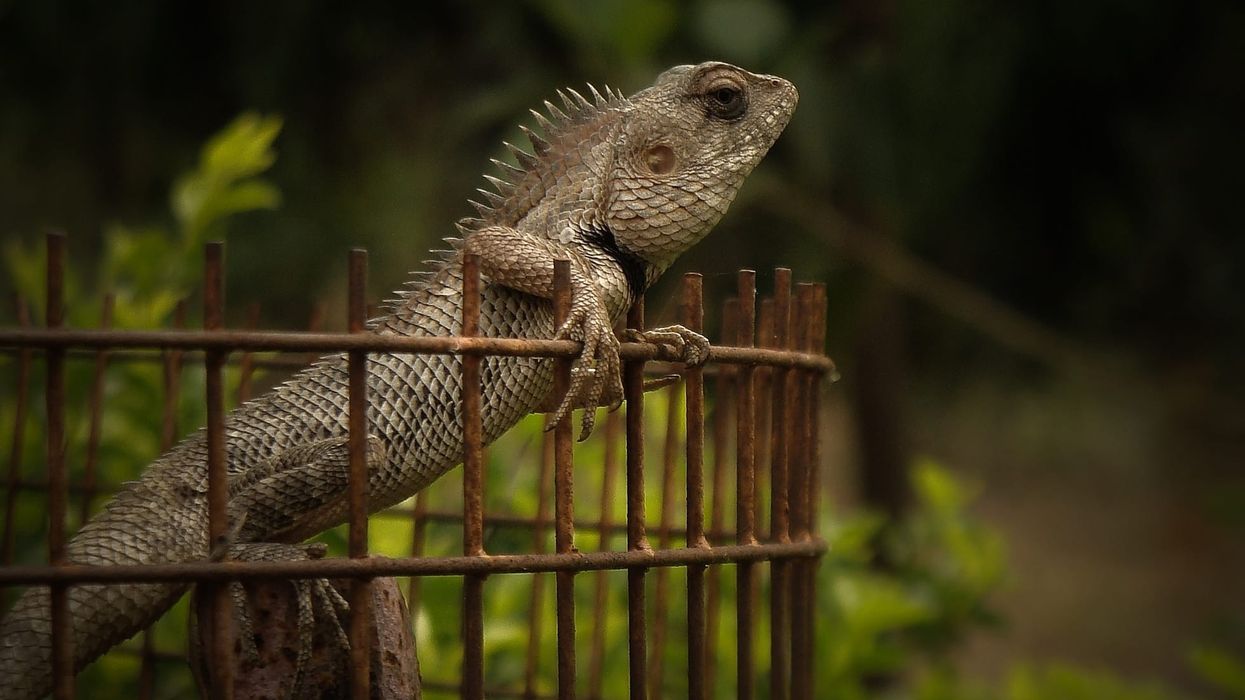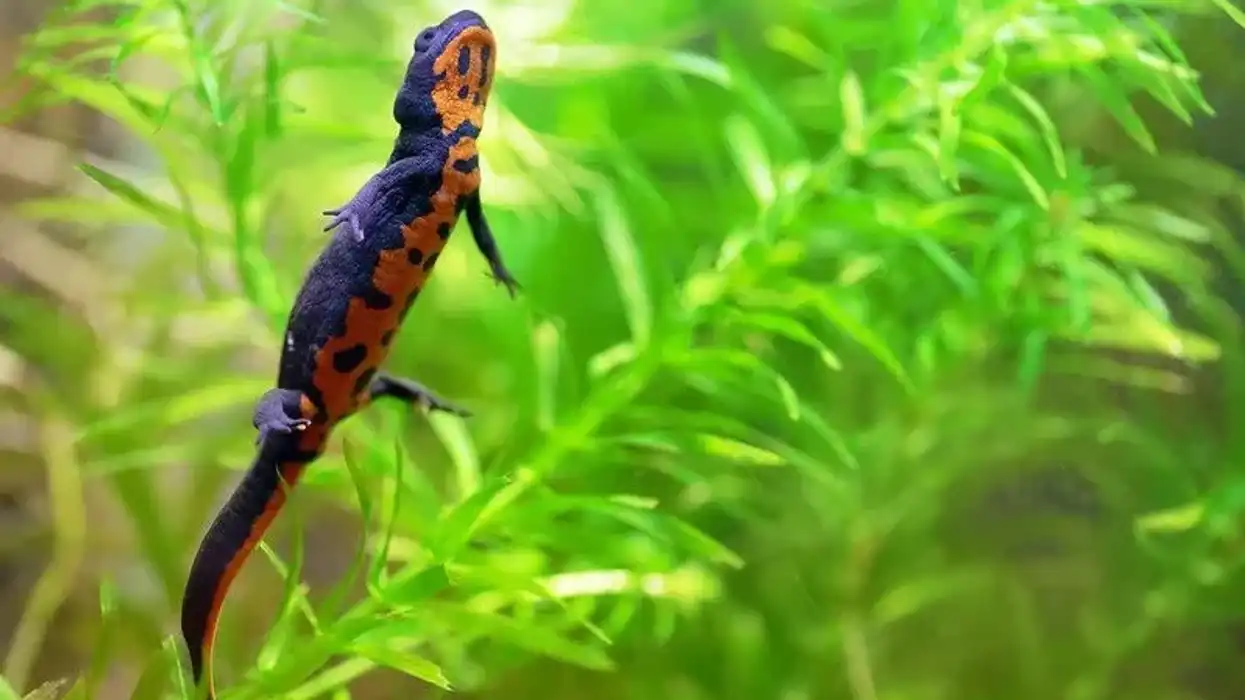Smooth earth snakes, Virginia valeriae, are a species of snakes that are found in scattered geographic locations in Central and North-Eastern America. Their natural habitats range from forests, wetlands, coastal plain, and suburban neighborhoods.
These snakes range from the color brown to grayish, which matches the surface soil color. They have a light-colored, wheatish, or tan belly.
The juveniles are generally darker in shade than the adults. They have tiny black marks on their back and sides scattered around their total length.
They have 15 scale rows on the middle, 15-17 rows of scale on the ventral region, and six scales on the upper lip. Faint keeled scales are present around its tail The length of their body is around 10 in (25.4 cm) in which they have a small head and a pointy snout.
The diet consists of soft-bodied insects, earthworms, and other arthropods.
Often this species of snake become the diet of other big snakes and mammals. The reproduction occurs in the late summer or fall.
They give birth to around 4-12 snakelings in each reproduction cycle in the middle of summer. Conservation efforts have been made throughout the range of New Jersey and in the geographical range of Georgia to protect the species of Virginia valeriae.
For more relatable content, check out these puff adder facts and gray rat snake facts for kids.
Smooth Earth Snake Interesting Facts
What type of animal is a smooth earth snake?
Smooth earth snakes are a kind of snake.
What class of animal does a smooth earth snake belong to?
The species of Virginia valeriae belongs to the class of Reptilia.
How many smooth earth snakes are there in the world?
The exact number of these snakes has not been listed.
Where does a smooth earth snake live?
These snakes have a range of habitats in eastern and central North America in various scattered locations. They are found in places like South Carolina, Texas, Georgia, New Jersey, Lowa, Southern Virginia, and the sides of the Mississippi River. The geographic range includes coastal plains, mountains, and river banks.
What is a smooth earth snake's habitat?
Smooth earth snakes, Virginia valeriae, live under the ground, in loose soil, in leaf litter. They are usually found in deciduous forests. These reptiles are known to hibernate under large rocks, in woodlands.
Who do smooth earth snakes live with?
Generally, the smooth earth snake is regarded as an extremely shy creature and considered to be fossorial in nature. This means that it usually spends its time living underground or in rocks, crevices, or debris.
How long does a smooth earth snake live?
The snakes live for around 9.5 years of age.
How do they reproduce?
The smooth earth snakes, Virginia valeriae, reproduction occurs during the late summer or fall. These snakes are viviparous in nature, which means, they give birth to young ones who develop and grow inside their body instead of laying eggs.
The process is similar to how mammals reproduce. They give birth to around 4-12 young ones and often they are less than 10 in number. These young snakes are around 2.5 in (6.4 cm) in length.
What is their conservation status?
These snakes, Virginia valeriae, fall under the Least Concern status under the IUCN Red List. Despite being uncommon they aren't protected in their natural habitats except for the state of Georgia where they are significantly protected.
The state of New Jersey attributed a special status to this species of snakes within the state. It is because there has been a significant loss of their population owing to its habitat loss. It protects these eastern smooth earth snakes from illegal trading, hunting, killing, and pet trade within the state.
Smooth Earth Snake Fun Facts
What do smooth earth snakes look like?
These snakes range from the color reddish-brown to gray that matches the surface soil color and have smooth scales. They have tiny black spots on the back and sides scattered around.
They have a small head and a pointed snout. The belly region is light-colored, generally whitish, or tan. The rostral region is generally broad and deep.
Earth snakes also have a divided anal and their dorsal scales are formed in 15-17 rows. There are 15 scale rows in the middle. There are six scales present on its upper lip.
The juveniles are of a darker color than the adults. They also have round pupils.
The smooth earthsnake, Virginia valeriae, has a glossy and shiny body, smooth scales, but at times weakly keeled scales are present near its tails which makes it look rough around the edge. At times the tiny faint lines present on its scales give the impression of weakly keeled scales.
They also have smelling musk secreted from two glands, situated at the base of its tail. These animals are heavy-bodied. The brown earthsnakes have six upper labials and four lower ones.

How cute are they?
These earth snakes, Virginia valeriae, unlike the rough earth snake, Virginia striatula, have a very shiny and polished body surface. These brown, gray-looking snakes have a small head which adds to their adorable factor. They are small which makes them cute to look at.
How do they communicate?
Like most other snakes, the western smooth earth snake and eastern smooth earth snake communicate by relying on their sense of smell, vision and by perceiving the vibrations on the ground. They also communicate with each other using chemical cues.
How big is a smooth earth snake?
The total length of the smooth earth snakes is around 7-10 in (17.8-25.4 cm). The yellow rat snakes are six times their size while scarlet snakes are twice their size.
How fast can a smooth earth snake move?
Smooth earth snakes, Virginia valeriae, move at a speed of 8 mph (13 kph).
How much does a smooth earth snake weigh?
The average weight of a smooth earth snake is around 0.2 oz (7.2 g).
What are the male and female names of the species?
No specific names have been assigned to the male and female snakes of this species.
What would you call a baby smooth earth snake?
A baby of earth snakes is called a neonate or a snakelet.
What do they eat?
This species of snakes' diet consists of soft-bodied insects hiding under the leaf litter, rocks, logs found around their habitats. They are mainly known to feed on earthworms. There are also known to prey on insect larvae, slugs, and snails. Since these gray and brown snakes do not have constrictors, they swallow these live animals alive.
Are they poisonous?
Smooth earth snakes are not poisonous. They are harmless and do not attack when handled with hands. When captured, in its defense, it releases a foul musk from its gland situated around its tail. It isn't harmful to be handled with bare hands by human beings.
Would they make a good pet?
Even though Virginia valeriae are not poisonous and are absolutely harmless to human beings and pets, it is advisable to let these wild animals remain in the wild and not as smooth earth snake pets. These snakes live under the ground, beneath logs, rocks, and leaf litter.
It may not survive in a different habitat than it is used to. Thus it is advisable to leave these reptiles in their natural habitats. It is illegal to trade smooth earth snake baby pets in the state of New Jersey.
Did you know...
The first specimen of this species, Virginia valeriae, was found in Kent Counties, Maryland.
When a comparison is drawn between the smooth earth snake vs rough earth snake, the main difference lies in the description of its scales in both species. Rough earth snakes, Valerie striatula, now called Haldea striatula, have keeled scales whereas the smooth earth species, Virginia valeriae, has smooth scales and weakly keeled scales only in the dorsal region.
The rough earth snakes normally do not bite.
The Virginia valeriae has three sub-species, namely, the smooth earth snake Texas or western earth snakes (V.v. elegans), mountain earth snakes, and eastern earth snakes.
The total length of a Virginia valeriae is quite small. These species are generally brown or gray in color. They have tiny black spots on the sides and back. They have a tan or wheatish belly. The adults are light in color whereas the juveniles are dark.
The range of their habitat stretches from central North America to eastern America
Is the smooth earth snake endangered?
These eastern smooth earth snakes are given the Least Concern status by the IUCN Red List. However, in the state of Georgia, these reptiles are protected throughout their range.
The state of New Jersey has given these snakes a special status. It is because their natural habitats have been threatened over the years. Due to this, the population of this snake species has declined.
How did the smooth earth snake get its name?
The smooth earth snake got its name from its brown and gray smooth scales. Their natural habitat is under the ground, under rocks, logs, and debris, and also they feed on earthworms. Thus, the description of their plain-looking physical appearance and the range of habitats are the reasons behind its name.
Here at Kidadl, we have carefully created lots of interesting family-friendly animal facts for everyone to discover! Learn more about some other reptiles from our black mamba facts and vine snake facts pages.
You can even occupy yourself at home by coloring in one of our free printable smooth earth snake coloring pages.









